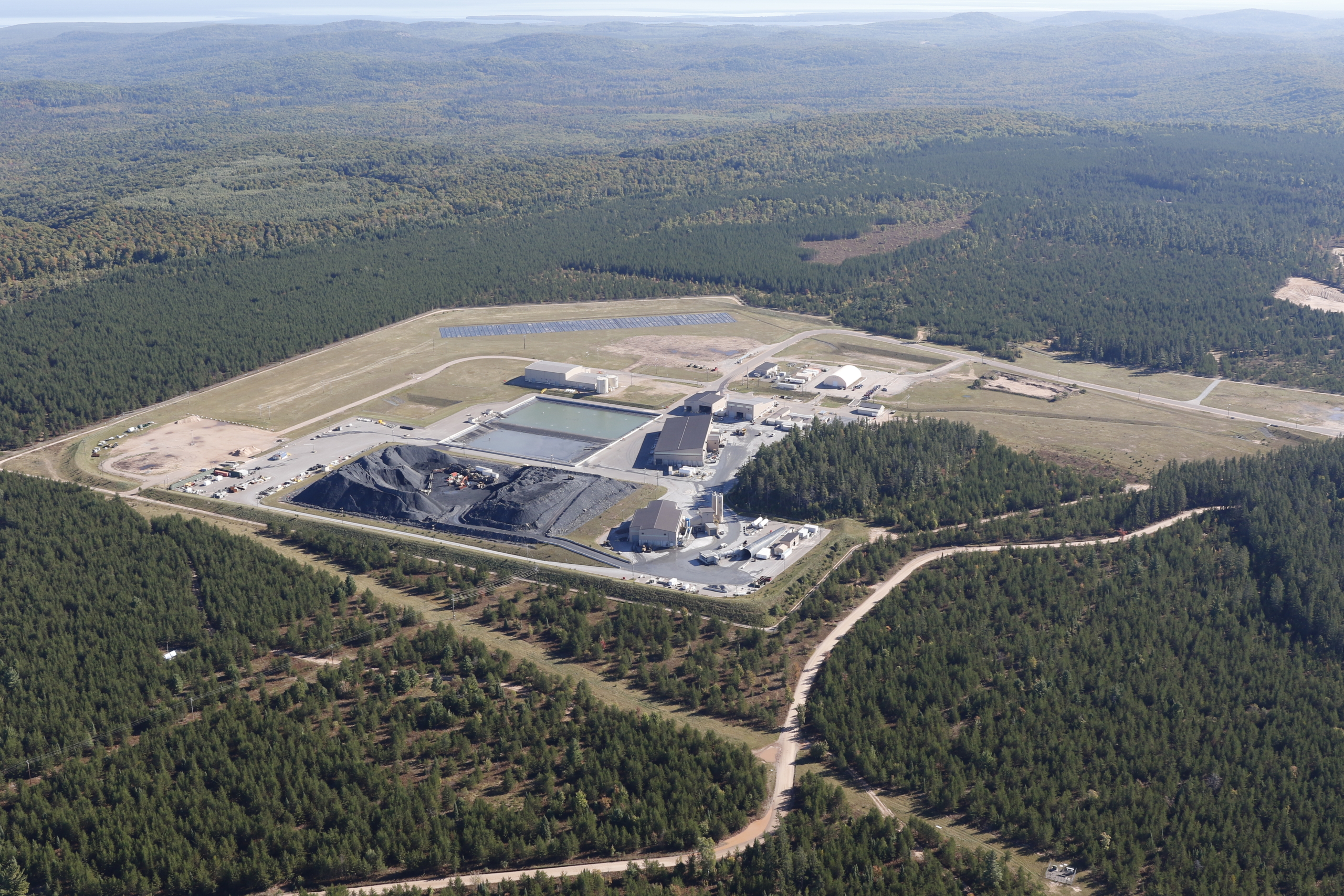
Eagle Mine, Mining, USA
Eagle River Mine’s CSC process increased community engagement and led to greater transparency on sensitive issues like spills, workplace injuries, and permit violations.
 Photo by Eagle Mine
Photo by Eagle Mine
Eagle Mine is an underground, high-grade nickel and copper mine located in the Upper Peninsula of Michigan, in the United States. With the goal of ensuring input from all stakeholders, including a vocal group of opponents, the mine instituted a twice-yearly community scorecard (CSC) process, spanning four years, 2012–2016. With its focus on key areas of concern as identified by community participants, the process proved particularly useful during the mine’s construction and early implementation phases.
According to company representatives, the CSC initiative pushed the company to a higher degree of disclosure—to a level of “uncomfortable transparency,” in the words of the company’s social responsibility advisor. The company reported publicly on issues such as spills, workplace injuries, and permit violations, among other sensitive topics.
Assessment of community concerns as the first step
Eagle Mine was engaging with communities prior to the introduction of the CSC. At the beginning of 2010, the company carried out community focus groups with the help of external consultants. The focus groups served to identify community views on important issues linked with mining activity—including how communities saw threats and opportunities. Based on this feedback, the mine developed environmental and community programs.

Community scorecard as an ongoing process
The mine launched the CSC to strengthen dialogue with the community and build community trust and confidence. Meagen Morrison, Eagle Mine’s social responsibility advisor, credited the mine’s management with setting the tone at the top and pushing for CSC implementation, which ultimately yielded positive outcomes. “The decision to introduce the CSC process was attributable to strong social responsibility leadership within the company and the importance placed on community relations due to the high percentage of local hires,” she said.
Through the CSC process, community members would rate Eagle mine’s performance in five areas: environmental performance, local hire, safety, communication and engagement, and community development. There were several important aspects of the process:
-
- Use of multimedia to inform public of upcoming meetings: In advance of the CSC assessment meetings, the company advertised widely. Using the range of media available, including television, social media, newsletters, and flyers posted on community bulletin boards at local coffee shops and post offices, company representatives sought to encourage participation from the fullest range of stakeholders possible.
-
- Commitment to transparency: Organized by the mine’s social responsibility team as two-hour public forums in the various communities near the mine, the assessment meetings began with the sharing of information on standards, company commitments, and performance. During the sessions, community members used hand-held electronic devices to score company performance in each of the priority areas as: “exceeds expectations,” “meets expectations,” “below expectations,” or “need more information.” The results were displayed on the screen for everyone to see. Following the sessions, the scorecard data was posted on the company website and shared with local news outlets. The company also committed to developing and publishing an improvement plan if any areas of improvement were identified.
-
- Participation of company’s management: In addition to the social responsibility team, the mine’s representation at these sessions included the general manager, mine manager, mill manager, environment manager, human resource manager, engineers, and technical experts. This showed the community the seriousness with which the company took the process. The managers’ presence also gave company representatives the opportunity to hear grievances and concerns first-hand and to respond directly to issues raised.
-
- Ensuring regular follow-up: The process was repeated every six months until a point when both community and company stakeholders decided that the CSC process was no longer needed.
-
- Pairing the CSC with community environmental monitoring: Taking it a step further, Eagle helped develop an independent environmental monitoring program called the Community Environmental Monitoring Program (CEMP). Pairing the CSC process with independent monitoring of specific environmental indicators proved critical to the effort’s success. Funded by the company through a foundation and designed to build trust and overcome community concerns about environmental issues, the monitoring program was managed by a well-respected nongovernmental organization. Activities included verifying Eagle’s own environmental monitoring data and conducting additional monitoring, at an average annual cost of about $300,000. Community members reported that the monitoring program has helped increase the legitimacy of the CSC, as well as buy-in on the CSC process.
Strengthened community bonds and transitioning from CSC
Eagle Mine’s CSC process resulted in the creation of action plans that enabled the company to address community feedback and make changes to improve company performance. Over time, the bonds between the mine and local communities strengthened considerably. In 2016, the company decided to transition away from the scorecard methodology and deploy other engagement methods to match the maturity of its operations and relationship with the community. Today, Eagle Mine uses a social license to operate (SLO) index that gathers data from the community via surveys every six months. The SLO index is the new way to gage community trust, knowledge, and risk. The mine deploys it to complement other engagement processes such as community forums, public tours, and the CEMP.
Sources: miningdigital.com; interview with Meagen Morrison.

Want to implement a CSC?

THE COMMUNITY SCORECARD IS SUPPORTED BY:
